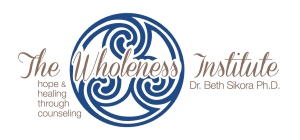
Last time we looked at Senior isolation, loneliness and depression for our loved ones who are living on their own, or maybe even with you. But, what about those in assisted living? How can they feel isolated when there are other people around them? How can they feel lonely when they are almost never alone? Loneliness among the elderly is not merely a lack of companionship; it’s the absence of meaningful connections that once defined their daily lives. If they don’t feel truly connected to or supported by the people around them, being with them may not provide enough fulfillment to combat loneliness. They may no longer have the relationships that once meant so much to them.
It’s difficult to watch a loved one navigate the waters of loneliness and depression. And loneliness and depression in seniors has some health risks associated with it, including heart disease and stroke. And for those with heart failure, the risk of emergency room visits, or hospitalization increases. So, what can we do to help the people we love deal with these feelings. Keeping a senior active and engaged might seem challenging, especially if you live far away or if your loved one is living with health, cognitive, or mobility limitations. So, what can we do to help? Try some of the following:
- Call them: use the phone, Zoom, or a video phone call.
Regular contact with loved ones, even phone calls, FaceTime, or Zoom, can help an older adult maintain social connections. If your loved one struggles with technology, a professional caregiver can help with set-up and troubleshooting to get them going. - Help them feel needed and valued.
Depression in the elderly sometimes stems from feeling unwanted or not valued. Ask for input or assistance from your loved one — even if they live far away. They will thrive and appreciate the opportunity to assist. - Participate in favorite activities.
Find activities you both enjoy, and plan times together to do them. Stay connected through regular visits, weekend dinners, baking cookies, card games, evening walks, or grandchildren’s sporting events. These activities can go a long way toward preventing isolation and depression. - Create opportunities for companionship.
Encourage your older loved one to safely engage in activities with community groups, religious organizations, and senior centers to provide opportunities to meet new friends and socialize. If they are in assisted living, they may have planned activities there in which your loved one can participate. If they are living alone, hiring a companion can sometimes help.
But what if this loneliness becomes something more: depression. Depression can be a vicious circle for those who already feel lonely; causing a low mood or lack of motivation which makes it very difficult for them to spend time with others. When they withdraw from others, the feelings of loneliness can increase. This can in turn deepen depression. And the lack of interaction with others may cause other health issues such as: Alzheimer’s, dementia, or other cognitive health problems. Watch for the signs of depression: feelings of hopelessness, loss of interest in activities, changes in sleep or appetite, and thoughts of suicide.
If you suspect your loved one is suffering from depression, talk with them. Let them know they are not alone. If the depression is serious, suggest they see a doctor for medication, or that they speak with a therapist. Offer to go with them to the doctor if they are afraid to go alone. Support them as they take the steps to improve their lives.












